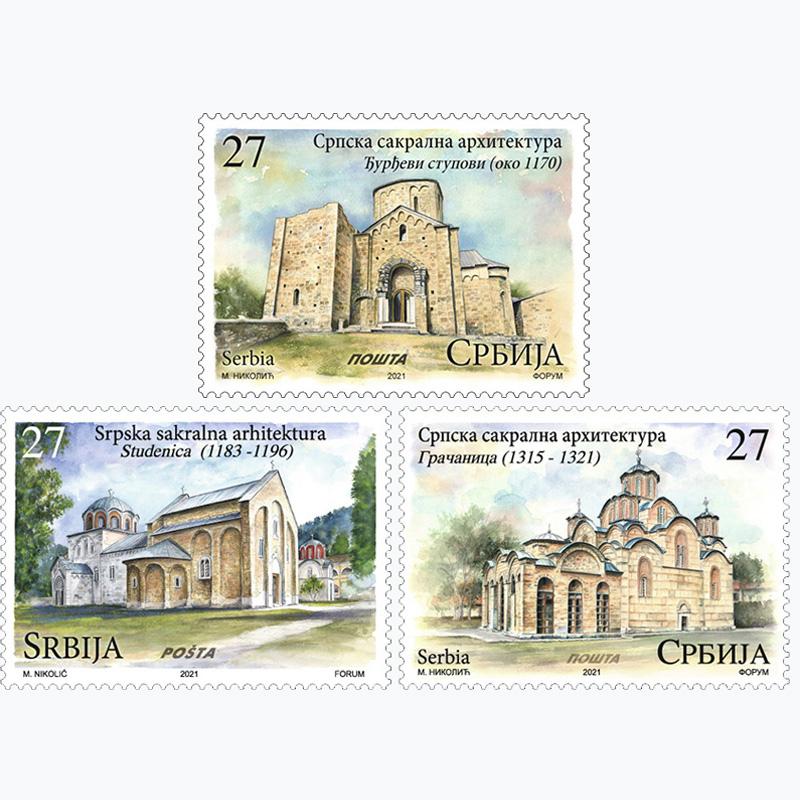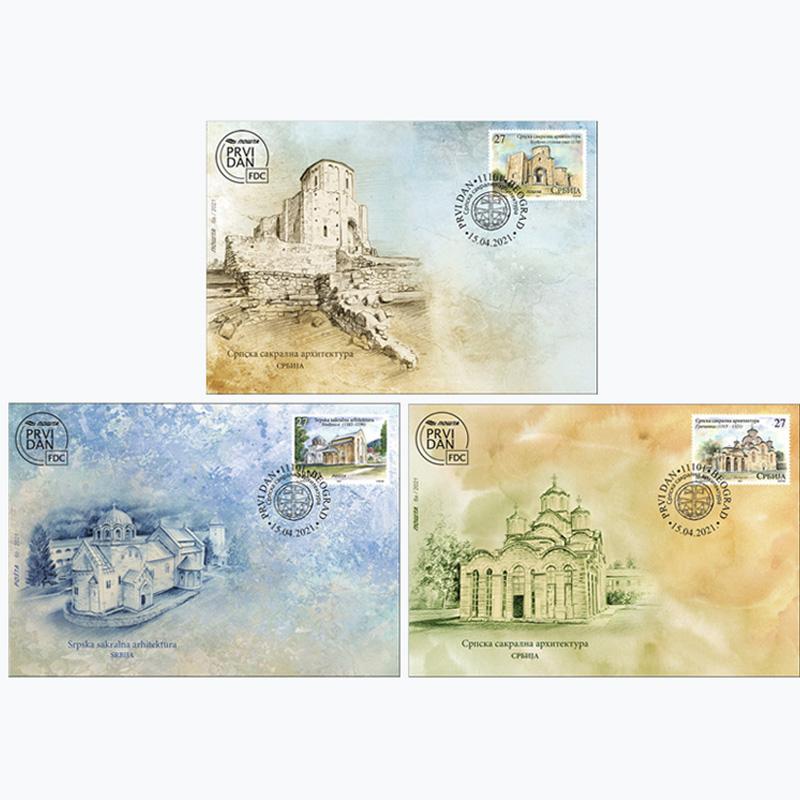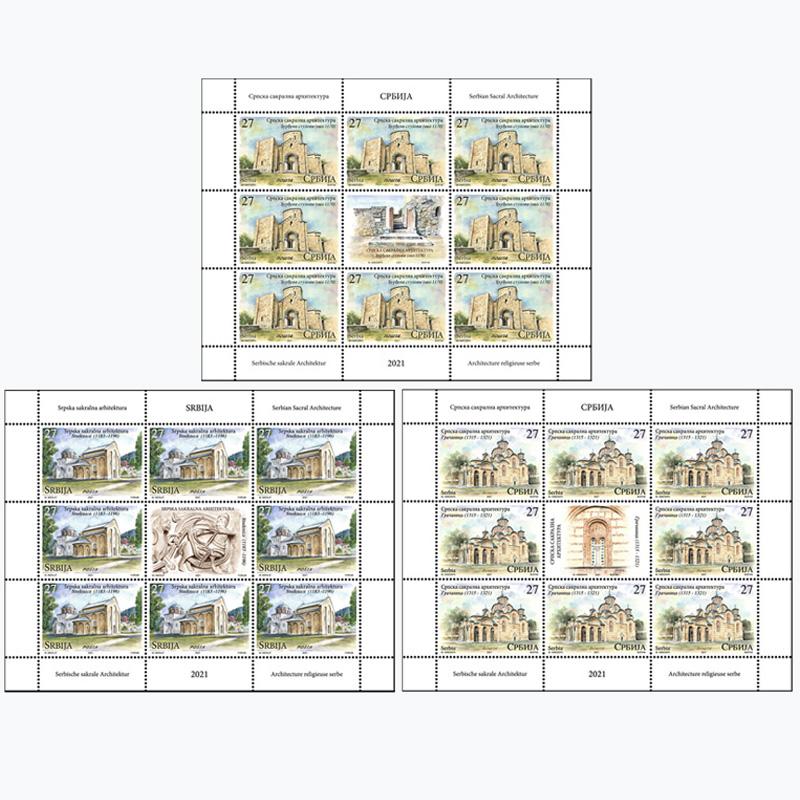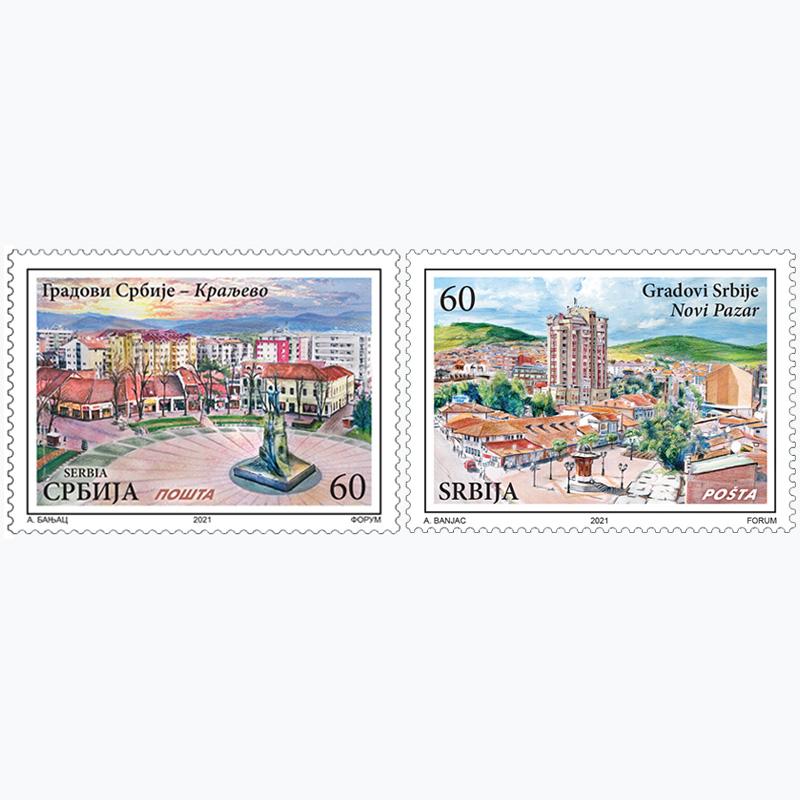Description
The ruins of the Đurđevi stupovi Monastery, the endowment of the Great Prince Stefan Nemanja, stand on top of the wooded hill that dominates the landscape of Novi Pazar. Complex – which consists of the church of St. George, refectory, dwelling, cistern and walls with an entrance tower – was built in eighth decade of the 12th century. The single–nave temple with a tripartite altar space, a nave with side vestibules and a narthex flanked by two towers, in its external appearance reveals the spirit of Western, Romanesque architecture. The frescoes, today mostly damaged and partly transferred of the Komnenos style and skilfully adapted to the architecture of the temple, which was especially evident in the unique dome with an eliptical plan. The entrance tower was turned into a chapel and the tomb of King Dragutin when the apse was added to the east side in 1282/83. Apart from the fact that the interior of the chapel is painted with frescoes of historical content, the works carried out in the monastery at the end of the 13th century included the construction of a new refectory, dwellings and painting of the catholicon’s nartex. The deterioration of the complex began in Otoman times, and culminated in the wars of the first half of twentieth century. Archaelogical and restoration works were carried out from 1960 to 1982, and the monastery life was renewed at the end of the last century. As part of the architectural complex of Stari Ras with Sopoćani, the monastery has been on the World Heritage List since 1979.
Expert collaboration: Institute for the Protection of Cultural Monuments of Serbia – Belgrade
Artistic realization of the issue: Miroslav Nikolić
Studenica, as the most important monastery complex of medieval Serbia, still represents a great artistic and spiritual centre of the Serbian people. Since the 12th century, when it was founded, this monastic community has not at any time interrupted its centuries-long life, whose cultural layers are recognized in a number of architectural and painting achievements. The endowment and tomb of the founder of the Nemanjić dynasty served as a model for many rulers of this line, not only as an incentive to build mausoleums that would resemble the Church of the Mother of God, but also as a place where they could give their personal contribution. Thus, after the construction of the monastery walls and catholicon, several buildings were built over time that were supposed to satisfy the religious and economic needs of the Studenica fraternity: the dining room, Radosav’s narthex, the church of St. Nicholas and St. John, King’s Church, lodgings, etc. Along with the builders, numerous painters worked in Studenica, from those who marked the path of Serbian medieval painting with masterpieces of Byzantine frescoes of the 13th century, through the court workshop of King Milutin and leading artists of the renewed Patriarchate of Peć, to the 19th century painters. Some of the capital examples of Serbian applied art are kept in the Treasury. Inscribed in the World Heritage List in 1986, the Studenica Monastery is a cultural monument where protective works are performed continuously.
Expert collaboration: Institute for the Protection of Cultural Monuments of Serbia – Belgrade. Artistic realization of the issue: Miroslav Nikolić
Church of the Assumption of the Mother of God in the Gračanica Monastery, the endowment of the king Milutin, was built in the second decade of the 14th century. Constructed in the form of a five-domed building with an inscribed cross plan, the church of Gračanica is one of the top architectural achievements of the era. In the middle of the 14th century, an outer narthex was added. Michael and Eutychius, famous painters from Thessaloniki, finished the frescoes by 1321. In the central dome, below the image of Christ Pantocrator, the Heavenly Liturgy, prophets and evangelists are presented. There are the Great Feasts Cycle, the Passion of Christ, Miracles and Parables, Christ’s appearances after the Resurrection, scenes from the life of the Mother of God, St. Nicholas and the Calendar of Saints in the nave. There are Eucharistic and Old Testament themes in the altar. Milutin and his wife Simonis, a Byzantine princess, are depicted as rulers by the will of God, because their crowns are brought to them by angels from heaven. The geneaology of the Nemanjić dinasty and the Last Judgment are painted in the narthex, while fragments of frescoes painted in the 14th century and around 1570 are preserved in the outer narthex. In addition to the compositions from the cycle of the Ecumenical Councils, the Akathist of the Mother of God and the Baptism, there are portraits of Serbian archbishops and patriarchs and scene of the funeral of Metropolitan Dionysius of Gračanica. The Gračanica treasury was destroyed in fires between 1379 and 1383. Today, the monastery houses a significant collection of icons, among which the oldest one is Christ the Merciful from the 14th century, unique in its dimensions (269 x 139 cm). Works on the conservation of architecture and paintings take place permanently. It was inscribed in the World Heritage List in 2006, as a part of architectural complex of Medieval monuments in Kosovo, with two more monastery complexes.
Expert collaboration: Institute for the Protection of Cultural Monuments of Serbia – Belgrade
Artistic realization of the issue: Miroslav Nikolić





